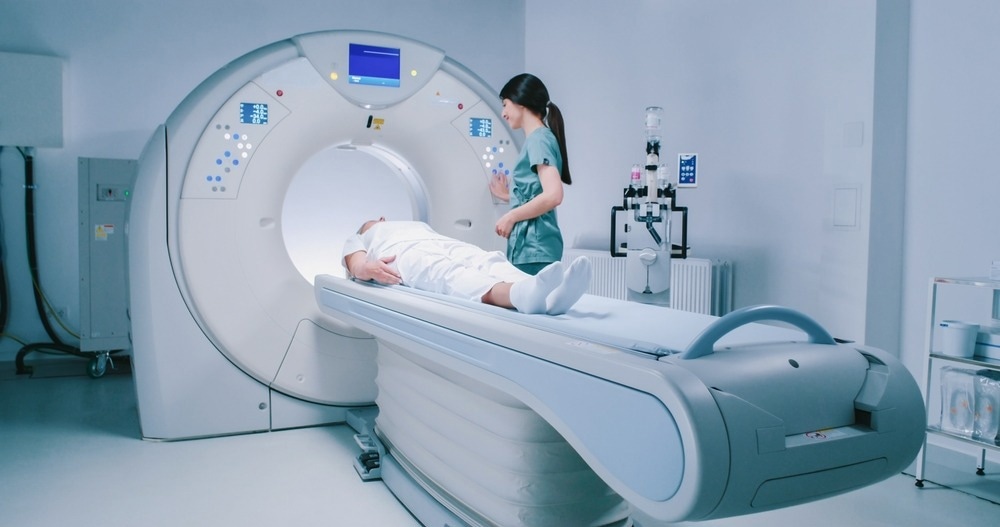Understanding nanomedicines
Nanomedicine in hepatic fibrosis diagnosis
Nanomedicine in hepatic fibrosis treatment
Nanomedicine in drug delivery
Nanomedicine in targeted drug delivery
Future perspectives
References
Further reading
Hepatic fibrosis is an abnormal wound-healing response triggered by chronic liver diseases, including non-alcoholic fatty liver disease, viral or alcoholic hepatitis, and Wilson’s disease. The response is characterized by excessive synthesis and deposition of extracellular matrix (ECM) components, which can further trigger the development of liver cirrhosis, liver failure, or liver cancer.

Image Credit: Shidlovski/Shutterstock.com
Hepatic stellate cells (HSCs) account for 13% of total liver cells. These cells are activated and transformed into myofibroblasts in response to liver injury. Activation of these cells is a major hallmark of hepatic fibrosis.
Many therapeutic approaches are emerging to inhibit the development of hepatic fibrosis. These approaches include anti-inflammatory and hepato-protective strategies, inhibition of hepatic stellate cell (HSC) activation and proliferation, inhibition of ECM synthesis and induction of ECM degradation, and gene therapy.
Despite promising outcomes in preclinical trials, most of the anti-hepatic fibrosis drugs fail to show desired efficacy in human clinical trials. The complex and multifactorial pathophysiology of hepatic fibrosis is the main reason behind treatment failure. Moreover, higher dosage of these drugs is associated with many health adversities. This highlights the need to develop novel therapeutic interventions for hepatic fibrosis.
Understanding nanomedicines
Nanomedicine refers to the application of nanoparticles in the diagnosis and treatment of diseases. Various nanotechnology-based methods have been developed to design, modify, and apply small-diameter nanoparticles (10-500 nanometers) for therapeutic purposes.
Nanomedicines have a high potential for targeted drug delivery. Nanoparticles can be used to develop cell- or tissue-specific devices that enable precise delivery of drugs at the disease site. Moreover, physicochemical characteristics of nano-drug carriers, such as size, shape, and surface properties, can be modified to enable targeted drug delivery.
Nanomedicine in hepatic fibrosis diagnosis
Nanomedicine has shown promising outcomes in the diagnosis and treatment of hepatic fibrosis. Ultrasound imaging and blood testing are standard approaches for hepatic fibrosis diagnosis. However, these methods lack diagnostic accuracy. Moreover, invasive biopsy-based diagnosis of hepatic fibrosis is associated with tissue damage.
The use of magnetic nanoparticles in magnetic resonance imaging (MRI) has shown promising outcomes in hepatic fibrosis diagnosis. Dextran-stabilized superparamagnetic iron oxide nanoparticles and citrate-coated ultrasmall iron oxide nanoparticles are used as MRI contrast agents to diagnose hepatic fibrosis accurately.

Image Credit: VesnaArt/Shutterstock.com
Iron nanoparticles and indocyanine green are used as photographic developers in MRI and near-infrared imaging, respectively. For targeting HSCs and early detection of hepatic fibrosis, a construct has been formed by coating iron nanoparticles with silicon dioxide and then coupling it with arginine–glycine–aspartic acid. Near-infrared fluorescence and MRI have shown that the construct can precisely identify fibrotic regions in the liver.
A novel contrast agent for MRI has been developed using zero-valent iron-based nanoparticles. The contrast agent has been functionalized with liver polysaccharide pullulan and fluorescent carbon dots to obtain a dual imaging contrast agent, which has shown high efficacy in targeted liver imaging and optical imaging.
Besides MRI contrast agents, ultrasound agents combined with targeting peptides have been developed for early and non-invasive diagnosis of hepatic fibrosis. High-contrast images of fibrotic regions and adjacent tissues in the liver have been obtained by conducting ultrasound imaging using PLGA polymer-coated and cyclic RGD peptide-modified core–shell perfluorooctyl bromide.
Nanomedicine in hepatic fibrosis treatment
Inorganic nanoparticles with distinct bioactive properties can be used as therapeutic agents for hepatic fibrosis. Titanium dioxide and silicon dioxide nanoparticles have been found to inhibit the expression and induce the degradation of collagen I. Moreover, they exhibit anti-adhesive and anti-migratory effects, which collectively make them suitable agents to treat hepatic fibrosis.
In animals, manganese oxide nanoparticles with antioxidant properties and cerium oxide nanoparticles with anti-inflammatory properties have been found to reduce liver steatosis, portal hypertension, and liver fibrosis. Similarly, gold nanoparticles have been found to inhibit HSC activation and prevent hepatic fibrosis in animals.
Nanomedicine in drug delivery
Nanoparticles are widely used as drug carriers for treating hepatic fibrosis. The most efficient drug carriers are lipid-based nanoparticles because of their good biocompatibility and low toxicity.
Studies using mouse hepatic fibrosis models have shown that cationic lipid nanoparticles loaded with procollagen gene-targeting siRNA can be retained in the liver to specifically inhibit procollagen expression and prevent hepatic fibrosis progression without side effects.
PLGA and eudragit nanoparticles have been used to deliver phyllanthin and silymarin, respectively, to reduce liver damage markers, inhibit inflammation, and prevent hepatic fibrosis.
High biocompatibility and low immunogenicity make protein-based nanoparticles a promising drug carrier for treating hepatic fibrosis. Curcumin-loaded zein nanospheres have shown high potency in reducing expressions of collagen I and matrix metalloproteinases (MMPs) in fibrotic liver.
Human serum albumin has been used to deliver dexamethasone nanoparticles to non-parenchymal hepatic cells, which play crucial roles in hepatic fibrosis pathogenesis. Similarly, glucose-modified albumin nanoparticles loaded with berberine have been found to inhibit HSC proliferation more efficiently and prevent hepatic fibrosis than berberine alone.
Nanomedicine in targeted drug delivery
Different nano-formulations have been designed for targeted drug delivery in hepatic fibrosis. For targeted inhibition of HSCs and prevention of hepatic fibrosis, liposome-based formulations loaded with anti-fibrotic drugs and HSC-targeting components have been developed. Similarly, polymer-based nanoparticles coupled with vitamin A have been developed to target HSCs specifically.
Cyclic peptide-modified liposomes and CXCR4 antagonist AMD3100-conjugated liposomes have been developed to target HSCs. Besides HSCs, various nano-formulations have been designed to target hepatic macrophages, which play vital roles in hepatic fibrosis pathogenesis.
Future perspectives
Strategies that can be adopted to increase the clinical application of nanomedicine in hepatic fibrosis include the development of highly sensitive nanomedicine systems that can respond to endogenous and exogenous stimuli and release payload at target sites.
Long-term toxicity, immunogenicity, and pharmacokinetics of nanomedicine systems should also be investigated systematically.
References
- Bai X., et al. 2020. Recent Advances in Nanomedicine for the Diagnosis and Therapy of Liver Fibrosis. Nanomaterials. https://www.ncbi.nlm.nih.gov/pmc/articles/PMC7599596/
- Tan Z., et al. 2021. Liver Fibrosis: Therapeutic Targets and Advances in Drug Therapy. Frontiers in Cell and Developmental Biology. https://www.frontiersin.org/articles/10.3389/fcell.2021.730176/full
- Singh S., et al. 2023. Understanding the Potential Role of Nanotechnology in Liver Fibrosis: A Paradigm in Therapeutics. Molecules. https://www.mdpi.com/1420-3049/28/6/2811
Further Reading